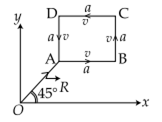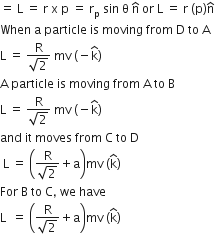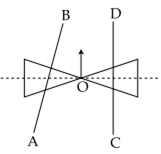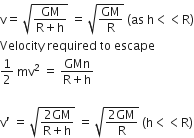A point particle of mass m, moves along the uniformly rough track PQR as shown in the figure. The coefficient of friction, between the particle and the rough track equals µ. The particle is released, from rest, from the point P and it comes to rest at a point R. The energies, lost by the ball, over the parts, PQ and QR, of the track, are equal to each other, and no energy is lost when particle changes direction from PQ to QR. The values of the coefficient of friction µ and the distance x(=QR), are, respectively close to :
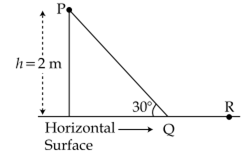
-
0.2 and 6.5 m
-
0.2 and 3.5 m
-
0.29 and 3.5 m
-
0.29 and 6.5 m
Solution
Multi-choise Question
C.
0.29 and 3.5 m
Energy lost over path PQ = μ mg cos θ x 4
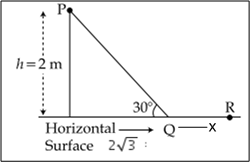
Energy lost over path QR = μ mgx
i.e μ mg cos 30° x 4 = μ mgx (∴ θ = 30°)

From Q to R energy loss is half of the total energy loss.
i.e μ mgx = mgh/2
μ = 0.29
The values of the coefficient of friction μ and the distance x (=OR) are 0.29 and 3.5 m
